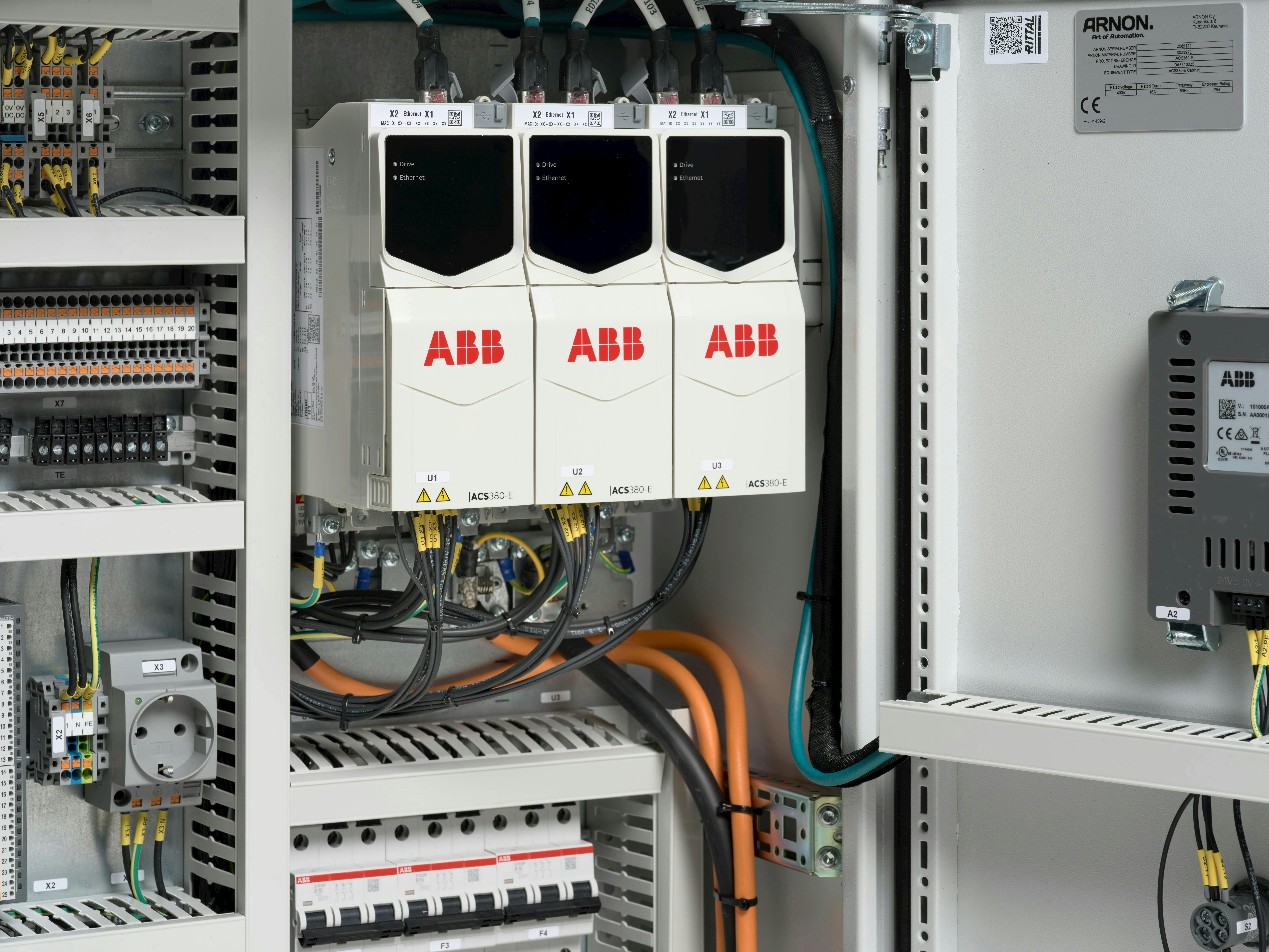Rewriting the rules of motion: 50 years of innovation in variable speed drives
Key Highlights
- The low-voltage variable speed drive (VSD) allows variable control instead of fixed-speed operation.
- These days, VSDs can reduce energy consumption by up to 30% on average—and as much as 80% in certain applications.
- VSDs have become essential for efficient motion control and process optimization.
Half a century ago, a defining innovation changed the course of modern industry. It didn’t make headlines at the time, yet its impact was felt across every sector that depends on motion: manufacturing, infrastructure, food and beverage, and transport, to name a few. The low-voltage variable speed drive (VSD), first commercialized in the 1970s by ABB’s predecessor Strömberg, hailed a new era in industrial efficiency.
Before the VSD, electric motors operated at a single, fixed speed. Controlling flow or output was only possible with mechanical throttles, such as dampers and valves, resulting in large amounts of wasted energy. Then came the realization that if you could adjust the motor’s speed electronically, you could align its power precisely with demand. That idea, which seems so obvious in hindsight, became the foundation of the VSD.
From local to global
Designed under the leadership of engineer Martti Harmoinen, those early systems transformed industrial operations by uniting electrical precision and mechanical performance. The innovation was recognized at home and abroad, quickly taking hold across industries all over the world. VSDs pump and purify water, move materials on factory floors, control airflows in HVAC systems, and power compressors in production lines. What began as a specialist innovation become a core part of everyday motion and energy efficiency.
The invisible enabler
Today, roughly 45% of the world’s electricity powers electric motors. Yet, fewer than one in four of those motors are currently equipped with variable speed control. This means that an enormous share of global energy use could still be optimized through technology that already exists. VSDs allow motors to draw only the power they need, reducing consumption by up to 30% on average—or up to 80% in some applications. They also curb mechanical wear by easing motors gently into operation and controlling load precisely, extending equipment life in the process.
Decarbonization, one kilowatt at a time
Energy efficiency may not always steal headlines in conversations around climate or environmental goals, but it is one of the smartest routes to cutting emissions. Integrating drives is something that can happen immediately, with the support of existing infrastructure and proven ROI.
Get your subscription to Control's tri-weekly newsletter.
If Europe alone applied drives more broadly across pumps, fans, and compressors, electricity use could fall by 140 terawatt-hours annually. For scale, that’s the equivalent of powering five million homes and avoiding 38 million tonnes of CO2 emissions each year. These are gains that are within reach, yet they’re being left on the table.
Sustainability and productivity are not at odds. OEMs and end-users adopting drives often find that what’s good for the planet is equally good for business. Lower electricity bills and equipment that stands the test of time; these outcomes define operational efficiency as much as positive environmental impact.
Smarter, safer, and more connected
But the story of the VSD shouldn’t be stuck in the past; it’s a powerful example of how innovation continues to evolve and adapt. Modern drives are intelligent devices that can integrate seamlessly with digital systems, fully equipped to meet the demands of Industry 4.0.
In fact, digitalization has become a key component of VSDs. ABB’s advancements in this areas include innovative tools that allow ease of selection & ordering, efficient engineering and customization, straight forward commissioning, optimized performance including Crealizer and fast recovery and prevention of unplanned shutdowns. These digital tools can improve energy efficiency and productivity to minimize the total cost of ownership.
The next 50 years of motion
As we commemorate this milestone, we also look to a future where every piece of the motion puzzle is constantly improving and evolving. The world’s electrification journey is booming, from renewable energy generation and storage to transport and heavy industry going electric. In each of these areas, drives are quietly doing the work that enables progress.
In the decades ahead, we expect drives to push the boundaries even further. They might become more compact, more intelligent, and increasingly connected within complete motor systems. The next generation of innovators will build on this foundation just as their predecessors did at the Karihaara sawmill. The principle remains the same: to turn every movement into progress.
About the Author

Volker Lindenau
ABB
Volker Lindenau is business line manager for low voltage drives at ABB Motion High Power.


